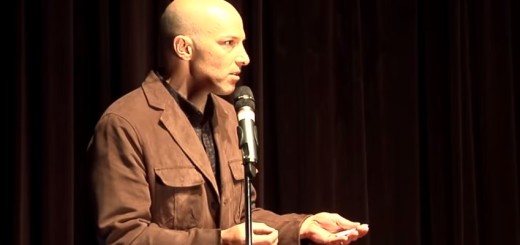7 Ways To Move Through Grief: Physical Activity
Article #7 in a series of 7
We’ve come to the last article of this series. I’ve told you about what I found beneficial while mourning the loss of my marriage – getting support from friends, family, and faith; practicing gratitude; writing in my journal; using healthy distractions; relying on structure and routine; and focusing on the future. And there’s one more thing I did that made a huge difference – physical activity.
 What Science Says About Grief and Exercise
What Science Says About Grief and Exercise
Studies show that getting your body into motion is an excellent therapeutic way to cope with grief. In an article on fitness.mercola.com, “Sweating Out Sadness: How Exercise Can Help the Grieving Process,” I found some interesting facts about the biological reasons why physical activity helps with grief. According to the article, neurotransmitters in the brain are triggered such as endorphins, serotonin, dopamine, glutamate, and GABA, and that some of these are well-known for their role in mood control. The article also mentions: “…one study found that 30-minute aerobic workouts done three to five times a week cut depressive symptoms by 50 percent in young adults.”
In 2009 I came across a study done in Canada about the affects of job loss on physical well being. Job loss ranks high on the list of the most impactful life stressors, along with divorce, retirement, and the death of a loved one. The researchers compared subjects with similar fitness levels, healthy eating habits, and exercise regimens. Those who had lost their jobs showed significantly higher stress-related disease indicators in spite of participating in wellness activities that were equivalent to those who were employed. This research proves that it’s even more imperative that you focus on eating well and exercising while grieving.
Coping with Anger
Elisabeth Kübler-Ross, who defined the stages of grief, said that anger usually comes after the denial stage – though she did point out that the stages of grief don’t always happen in a specific sequence, and I can attest to that! In case you aren’t familiar with the five stages, along with denial and anger are the bargaining, depression, and acceptance stages.
There were times when the only way I could cope with anger was to get into motion, and the best way for me was to walk fast, far, and often. At times I felt as though excess energy was building up in my body. It made me feel anxious and antsy, and the healthiest thing to do was to externalize it rather than internalize it by having a good, sweat-producing workout.
Maybe you’re one of those people who love doing strenuous workouts, so it’s not a big deal to go power walking for three or more miles. For me, it was a huge deal. And it was huge for two reasons.
First of all, I’m a fairly cerebral person who usually prefers doing physical activity when it’s for a purpose. Like gardening for example. Though I do it because it’s good for me, I really don’t like working out for the sake of working out. So, I’ll walk on a treadmill if I must, but frankly, I don’t particularly enjoy it.
The second reason it was a big deal for me to successfully find relief in physical activity was a very personal one. Eight months before my ex-husband told me he wanted to call it quits on our marriage, I had had major abdominal surgery. Getting to the point where I could do strenuous activity after not having the ability to do so for several years before the surgery finally corrected my health issue… well, that was a tremendous achievement for me.
What I learned during my grieving was that physical hard work allowed me to release the anger energy out of my system. Because I had to move into an apartment for a while before buying a house, gardening was out of the question. So I walked… a lot.
Blissing Out
Another excellent physical activity I used to cope with the stress, anxiety, and anger was yoga, specifically restorative yoga. There’s something deeply therapeutic about giving yourself a full hour devoted to mindful stretching and restful yoga poses.
Restorative yoga doesn’t require you to contort yourself into positions that test your athletic ability or physical stamina. Every movement is gentle, and all poses allow you to either focus on stretching tight muscles, practicing balance, or releasing tension from your shoulders, neck, back, and hips.
What’s particularly helpful is the fact that you’re encouraged to pay attention to what your body is telling you. The still, meditative sections of the class that my yoga teacher, Regina, guides us through are my absolute favorite parts. I especially love the restful Shavasana or corpse pose. Yes, it’s just like you are imagining it. You stretch out flat on the floor like a corpse. Except, for me, this pose makes me more aware of my aliveness than any of the other poses!
During Shavasana, Regina plays a recording of monks chanting the Eternal Om and leads us through a self scan to notice where we are holding bodily tension so we can further release it. She encourages us to use our breath to let go and then allows us time to simply be still and bliss out.
Not only does restorative yoga increase flexibility, ward off stress-related diseases, and improve circulation and digestion, it does wonders for mental and emotional health. Especially since it makes you feel good to take care of yourself after spending so much time spent feeling bad in general!
Wrapping Up
Before I close, I have one more observation to pass along. As I reflect on my original intention for using these seven ways to move through grief, I realize that I had a theory, and it was partly incorrect. I thought that if I dealt with my grief head on – faced the pain rather than hide from it – that if I listened to myself and what I needed and then put those supportive measures into place, I would move more efficiently through the process. You see, I knew it was going to be a process with steps that I wouldn’t be able to skip.
The truth, I learned, is that there’s nothing about grief that can be remotely described as efficient. Grief, just like all painful human emotions, is unpredictable and messy.
However, when I think about what having those supportive measures in place actually meant to me, especially as I think back on how I felt during the darkest moments, I do believe that I came through it more intact, healthier, and stronger than expected… and more intact than most do less than a year after their loss.
After my experience I can say with confidence that it’s best if you listen to yourself. Pay attention to what your grief and your pain is telling you that you need. Then move through it with as much gentle self care as possible. Listen and do what’s most helpful for you.
__________________________________________________________
Angela Loeb is into self-development… and she helps people bring who they really are to what they do.
More at http://angelaloeb.com
__________________________________________________________



